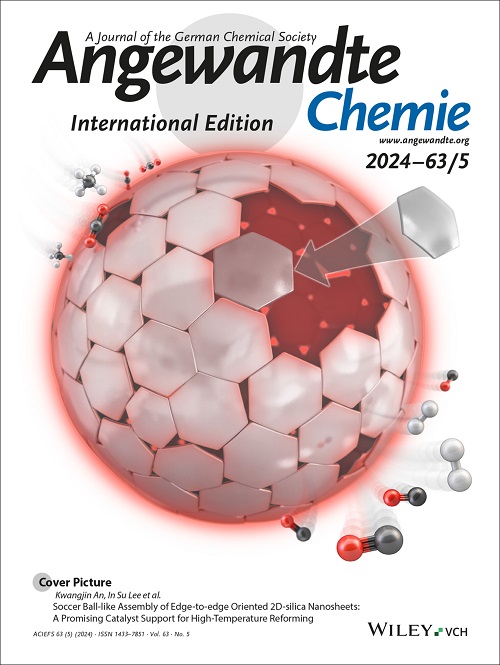A 'Cocktail' Fluorescent Probe for Multi‐ROS Imaging Unveils Ferroptosis‐Driven Liver Fibrosis Development
IF 16.1
1区 化学
Q1 CHEMISTRY, MULTIDISCIPLINARY
引用次数: 0
Abstract
Liver fibrosis is a pathological repair response triggered by chronic liver injury. Without treatment, it may progress to cirrhosis, liver failure, or hepatocellular carcinoma, contributing to high mortality rates. To date, no approved therapies specifically target advanced liver fibrosis, thus exploring the molecular mechanisms underlying liver fibrosis has become crucial. Previous studies have highlighted significant controversy regarding the role of ferroptosis in liver fibrosis. Given that ROS serve as key mediators in both ferroptosis and liver fibrosis, ROS may serve as a molecular nexus connecting ferroptosis and liver fibrosis. To comprehensively elucidate the molecular network involving ROS and ferroptosis in liver fibrosis, we designed and synthesized the first multi‐functional 'cocktail' fluorescence probe, FP‐ROS, enabling highly sensitive and selective simultaneous imaging of O2•–, H2O2 and ONOO−. FP‐ROS was successfully employed to assess ferroptosis levels in the livers of fibrosis mice following drug intervention. Combining transcriptomic and proteomic analyses, we elucidated the signaling pathway NOX→ONOO−→GCLM(C46)→GSH→ferroptosis→hepatic stellate cells (HSCs) activation. This study demonstrates that ferroptosis plays a critical role in HSCs activation and further elucidates the molecular interplay between ROS and ferroptosis in fibrosis progression. These findings provide novel insights into the diagnosis and therapeutic strategies for liver fibrosis.用于多ROS成像的“鸡尾酒”荧光探针揭示了铁下垂驱动的肝纤维化发展
肝纤维化是由慢性肝损伤引起的病理修复反应。如果不进行治疗,它可能发展为肝硬化、肝功能衰竭或肝细胞癌,导致高死亡率。到目前为止,还没有批准的治疗方法专门针对晚期肝纤维化,因此探索肝纤维化的分子机制变得至关重要。先前的研究强调了关于铁下垂在肝纤维化中的作用的重大争议。鉴于ROS在铁下垂和肝纤维化中都是关键介质,ROS可能是连接铁下垂和肝纤维化的分子纽带。为了全面阐明肝纤维化中涉及ROS和铁凋亡的分子网络,我们设计并合成了第一个多功能“鸡尾酒”荧光探针FP - ROS,实现了对O2•-、H2O2和ONOO−的高灵敏度和选择性同时成像。FP‐ROS被成功地用于评估药物干预后纤维化小鼠肝脏中的铁下垂水平。结合转录组学和蛋白质组学分析,我们阐明了NOX→ONOO−→GCLM(C46)→GSH→铁死亡→肝星状细胞(hsc)活化的信号通路。本研究表明,铁下垂在造血干细胞活化中起着关键作用,并进一步阐明了ROS与铁下垂在纤维化进程中的分子相互作用。这些发现为肝纤维化的诊断和治疗策略提供了新的见解。
本文章由计算机程序翻译,如有差异,请以英文原文为准。
求助全文
约1分钟内获得全文
求助全文
来源期刊
CiteScore
26.60
自引率
6.60%
发文量
3549
审稿时长
1.5 months
期刊介绍:
Angewandte Chemie, a journal of the German Chemical Society (GDCh), maintains a leading position among scholarly journals in general chemistry with an impressive Impact Factor of 16.6 (2022 Journal Citation Reports, Clarivate, 2023). Published weekly in a reader-friendly format, it features new articles almost every day. Established in 1887, Angewandte Chemie is a prominent chemistry journal, offering a dynamic blend of Review-type articles, Highlights, Communications, and Research Articles on a weekly basis, making it unique in the field.

 求助内容:
求助内容: 应助结果提醒方式:
应助结果提醒方式:


